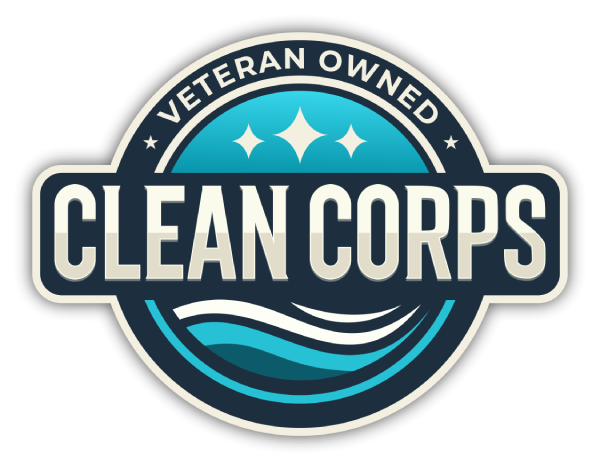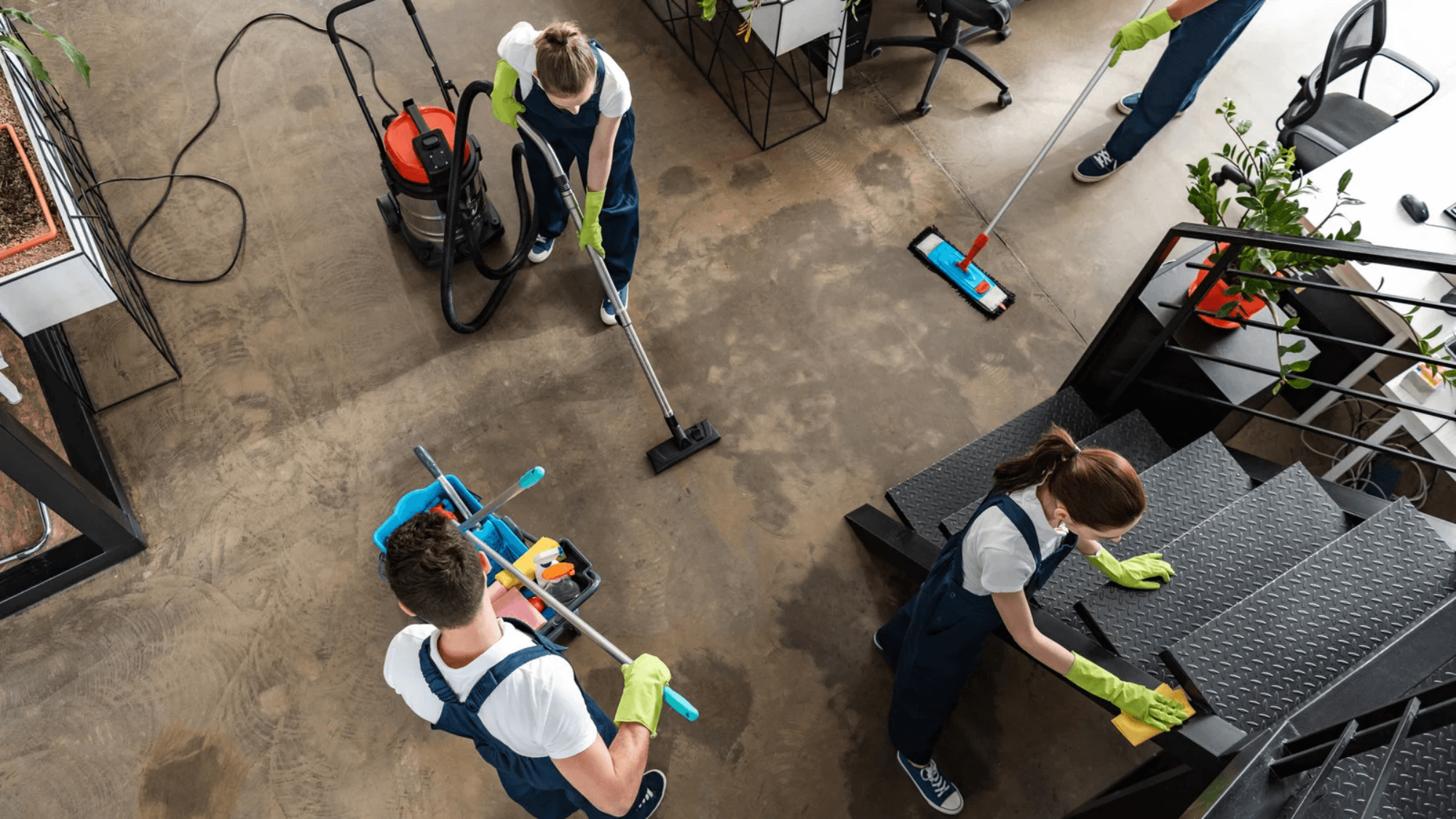This office deep cleaning checklist provides essential guidance for office managers, cleaning staff, and business owners who want to maintain a healthy, organized workplace. This article explores practical strategies for deep cleaning, including preparation steps, checklists for specific areas, and best practices for ongoing cleanliness. By following this guide, you’ll ensure that all areas of your office remain sanitary, inviting, and compliant with health standards.
Preparing for Deep Cleaning
Preparation is key to a successful deep cleaning checklist for office spaces, setting up a plan that saves time and enhances efficiency. The first step is scheduling a convenient time, ideally after hours or on weekends, to minimize disruptions. Assigning tasks to cleaning staff ensures that all areas are thoroughly covered.
Preparation steps:
- Organize Supplies: Stock up on essentials like glass cleaner, disinfectant, and vacuum filters to tackle all cleaning tasks effectively.
- Create a Schedule: Designate times for general areas, workstations and offices, and high-traffic spaces like lobbies.
- Establish a Cleaning Plan: Identify zones, such as the reception area, bathrooms, and kitchen, that require specific attention. Use a deep cleaning office checklist to monitor progress.
- Employee Communication: Inform staff of cleaning schedules to avoid disruptions and arrange workspace access if needed.
- Safety Preparation: Ensure the availability of gloves, masks, and other protective gear for staff.
A well-organized office deep cleaning plan ensures a comprehensive approach, addressing every corner and keeping high-use areas in top condition.
Meeting Rooms and Conference Areas
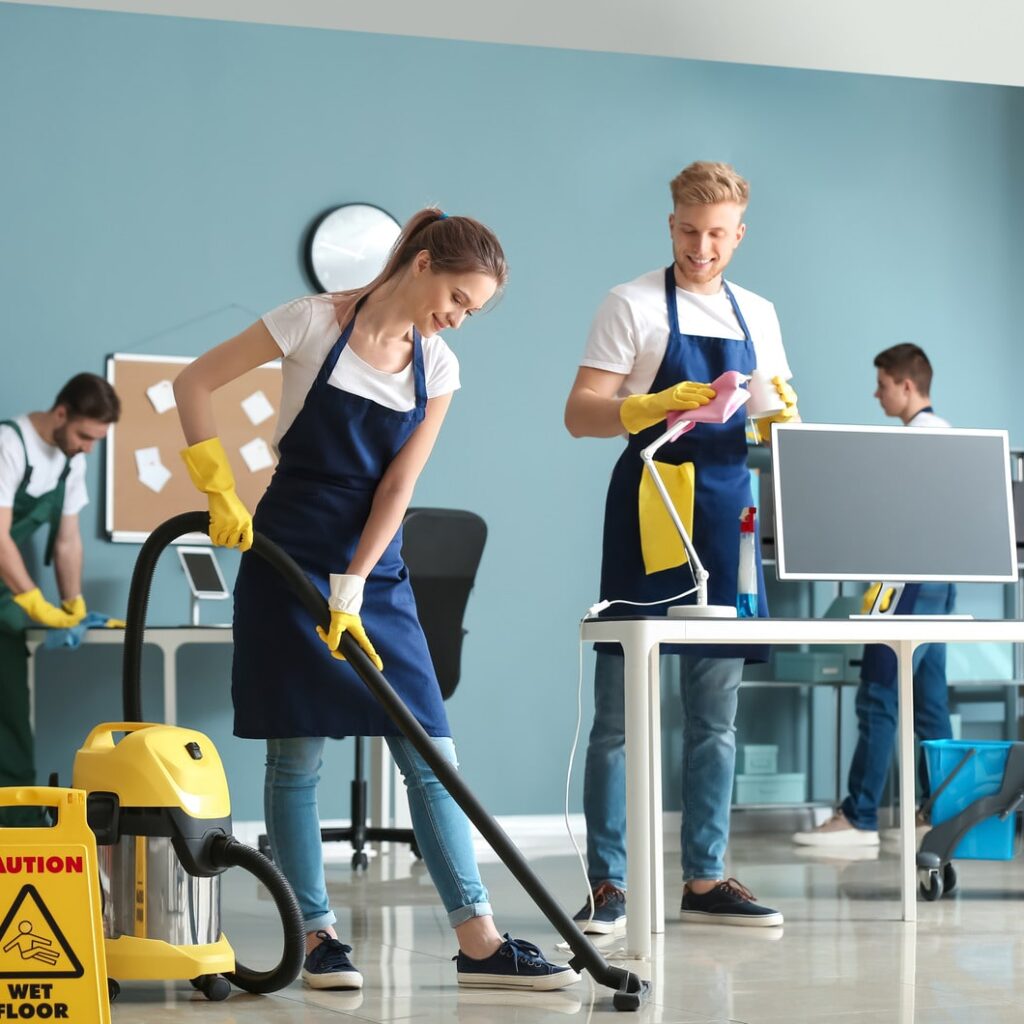
Meeting rooms are central to office activity, so a thorough deep cleaning checklist office should prioritize these spaces. Key areas to focus on include tables, chairs, electronics, and high-touch surfaces. Disinfecting remote controls, whiteboards, and any shared equipment reduces germs and creates a pleasant environment.
Tables and chairs should be cleaned and disinfected thoroughly, especially in busy offices with frequent meetings. Don’t forget electronics such as projectors, monitors, and shared devices. Regular cleaning of these surfaces, along with kitchen and break rooms and bathrooms, keeps the office free from germs and visually appealing.
Disinfection and Sanitization
Effective sanitization is essential to keep an office environment germ-free. This includes disinfecting common areas and high-touch surfaces regularly with EPA-approved disinfectants to ensure a safe workspace. Key areas for disinfection include:
- Door Handles and Light Switches: Frequent use makes these prime spots for germ transfer.
- Work Desks and Keyboards: Sanitizing desktops, keyboards, and mice prevents cross-contamination between users.
- Shared Equipment: Items like printers, scanners, and phones are common sources of germs.
- Trash Receptacles: Emptying trash and disinfecting bins prevent bacteria buildup.
- Restrooms: Cleaning and disinfecting hand dryers, sinks, and toilets maintain hygiene in high-use areas.
Following these deep cleaning checklist for office standards ensures all spaces are regularly disinfected, keeping employees safe from contaminants.
Post-Cleaning Inspection
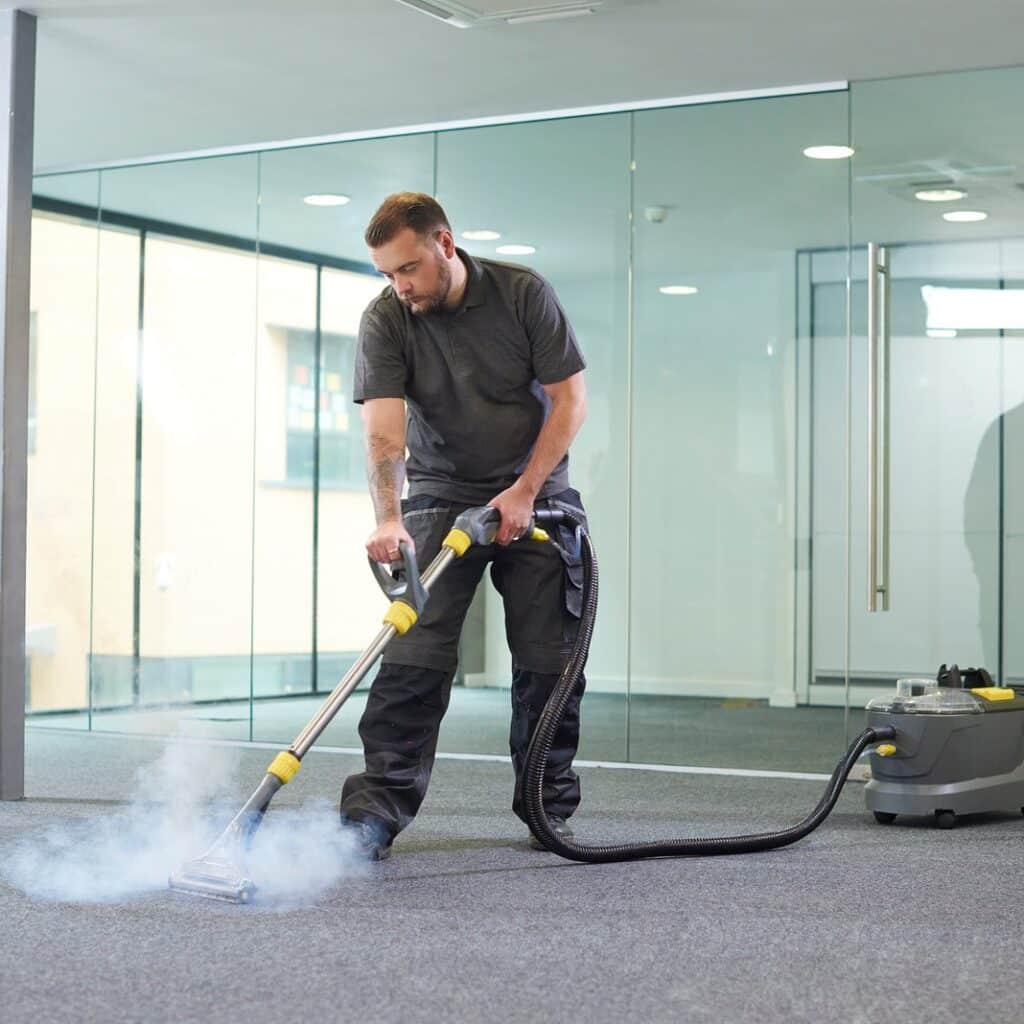
A thorough post-cleaning inspection is crucial for maintaining high standards of cleanliness across the office. This process ensures that every area meets established quality benchmarks and that no spaces are overlooked. By using a quality control checklist, inspection teams can systematically review key areas, focusing particularly on spot-checking high-touch surfaces like door handles, switches, and shared equipment. This attention to detail minimizes the risk of germ spread and promotes a hygienic environment.
Employee feedback plays a valuable role in the inspection process, allowing teams to identify frequently missed spots, such as under desks or behind equipment, that might require additional attention. Regular reviews and feedback help refine cleaning protocols, making future deep cleans more effective and efficient. This checklist for deep cleaning office spaces not only helps uphold quality but also boosts team accountability and ensures a consistently high standard of cleanliness throughout the workplace, creating a safe and inviting space for all.
Maintaining Cleanliness
To extend the benefits of deep cleaning, regular maintenance is essential. Implementing daily and weekly protocols keeps the office tidy and reduces the need for frequent deep cleans. Here are some effective maintenance tips:
- Daily Trash Collection: Empty all trash receptacles daily to prevent odors, discourage pests, and avoid waste buildup, especially in high-traffic areas like break rooms and restrooms.
- Weekly Vacuuming: Vacuum carpets, rugs, and other flooring weekly to reduce dust, allergens, and dirt buildup, creating a cleaner environment and improving indoor air quality.
- Wipe Glass Surfaces: Use a high-quality glass cleaner on windows, screens, and glass doors to remove fingerprints, dust, and smudges, enhancing both clarity and professional appearance.
- Restock Supplies: Regularly check and restock essential items, such as toilet paper, paper towels, hand soap, and cleaning products, ensuring they are readily available for employees and visitors.
- Employee Involvement: Encourage employees to keep their desks and personal areas tidy by organizing items, discarding unnecessary papers, and cleaning up spills, which supports overall office cleanliness.
- Disinfect High-Touch Surfaces: Clean and disinfect high-contact areas like door handles, keyboards, and shared equipment daily to minimize germ transfer and support a healthy workplace, especially during flu season.
- Air Vent and Filter Maintenance: Clean air vents and change filters regularly to maintain good air quality and prevent dust buildup in HVAC systems, contributing to a fresh and allergen-free environment.
Establishing a structured cleaning schedule ensures a cleaner, more organized office.
Office Deep Cleaning Guide
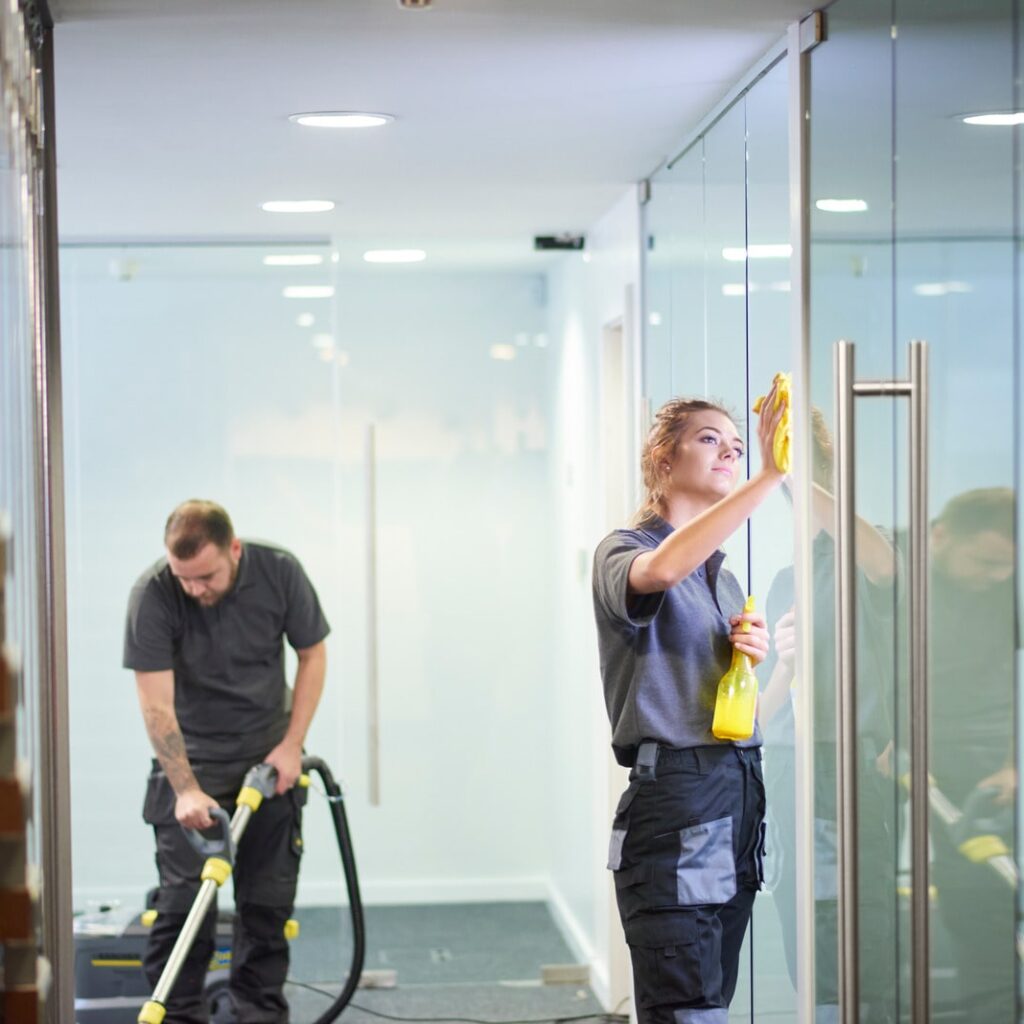
A well-rounded office deep cleaning guide should cover all cleaning tasks with recommended frequency recommendations for year-round cleanliness. Large spaces with high foot traffic may require daily cleaning, while smaller, lower-use areas can be managed on a weekly or monthly basis.Hiring a professional vs in-house cleaning team depends on budget and facility needs. Cost considerations are essential for budget planning, as well as service provider selection if outsourcing. A comprehensive approach to deep cleaning ensures consistent, thorough cleanliness, while a balanced maintenance plan prevents clutter and grime buildup.
Conclusion
An effective office deep cleaning checklist supports a cleaner, safer workplace environment. Choosing a structured cleaning approach tailored to your office’s needs promotes a healthier and more productive workspace, keeping all areas in optimal condition for employees and visitors alike.
Quality Cleaning at Your Fingertips in Orlando – Request Your Quote Today!
We’ve Received Your Order!
Thank you for reaching out to CleanCorps.
Please note that we have received your information and a dedicated advisor will be reaching out to you very soon to go through next steps.
Immediate Concerns? If you have urgent questions or matters to discuss, or if you don’t hear back from us in a few hours, please don’t hesitate to reach us directly at:
Phone: (407) 638-8956
